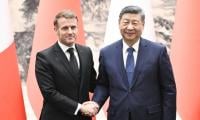The satellite imagery from Ladakh clearly shows that the Indian forces are now present in great numbers with Chinese also having offensive posture on the border. It were the Indians who had pinned great hopes in military talks with China, seeking an end to the deadly standoff quietly. But this did not happen. The Chinese forces, though somewhat moving back, are still entrenched at the junction of Galwan and Shyok rivers in eastern Ladakh. In fact, after the June 15 deadly clash between the two countries’ forces, the Chinese as well as the Indians have amassed large number of troops and artillery in the concerned area.
Besides the political front, there are few Indian successes on the diplomatic front with regard to the Chinese. No country is interested in China-India border standoff or is willing to play a mediatory role. China is a big market and the world survives on cheap Chinese goods. Some overly proud Indian commentators believe that India should expand the theatre of conflict. But the Indian armed forces cannot harass China and its ships on the open seas nor they are in a position to put pressure on the Chinese at other points of the Line of Actual Control (LAC). A full blown military retaliation is out of the question. Saner minds tells jingoistic opinion makers that China is five times bigger than India in GDP and per capita income. There is no match. They have a much stronger and advanced military while the Indian military depends on imported weapons as India is the largest importer of weapons in the world.
Indian commentator Swapan Dasgupta speaks about the present situation: “The bloody skirmishes involving India and China in the Ladakh region have produced tremors within India. Although the preoccupation with the Covid-19 pandemic has distracted from single-minded excitement, the internal political temperature has nevertheless soared. The revulsion over China’s larger designs has prompted demands for a boycott of Chinese goods, services and investments. Although memories of the 1962 military debacle — not to mention the loss of Aksai Chin — still haunt the national imagination, there is still a belief that today’s India has a greater capacity to look China in the eye.
“Hopefully, this faith in the national resolve will never be tested in a direct military conflict which has the potential of not remaining localised. But the danger should not be minimised, not least because complex geo-strategic calculations are often overwhelmed by human angularities that are located in history. This is particularly so with India and China, two neighbouring civilisations whose understanding of each other are tenuous.”
On the other hand, the Indian public is outraged but also rather confused. It does not understand why their prime minister is so meek with regard to China but when it comes to Pakistan, his boasts have no limits or boundaries. With at least more than 20 soldiers dead, the common Indians thought that some sort of retaliation in some shape would be coming from their side. But there is a meek silence with Prime Minister Modi unable to name China even on a photo-op tour of Ladakh. There is now a groundswell of popular opinion against Modi due to his domestic policies and it is rising. Barring Chinese applications or limiting imports is not helping the government’s image. Common Indians believe that Modi has poorly tackled the alleged Chinese threat to Indian sovereignty. The government’s spin shop has failed to deliver.
Indian politician and columnist Sudheendra Kulkarni has stated that “After thousands of lives lost with Pakistan, soldiers and civilian together, in so many years we couldn’t take an inch from them, how do you see India taking Aksai Chin Back?” This statement is a clear manifestation of flawed political and military strategy of India. It also shows the incompetence and professional weaknesses of their huge military apparatus.















